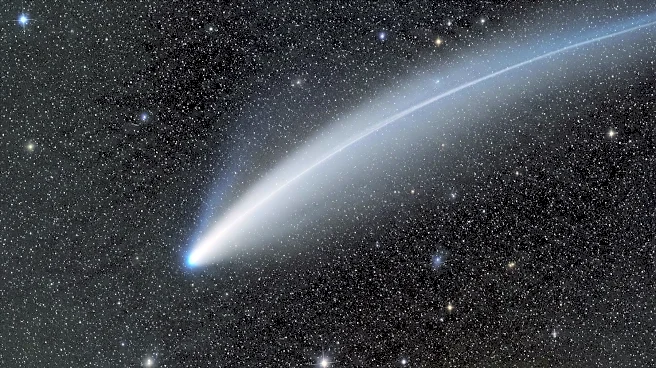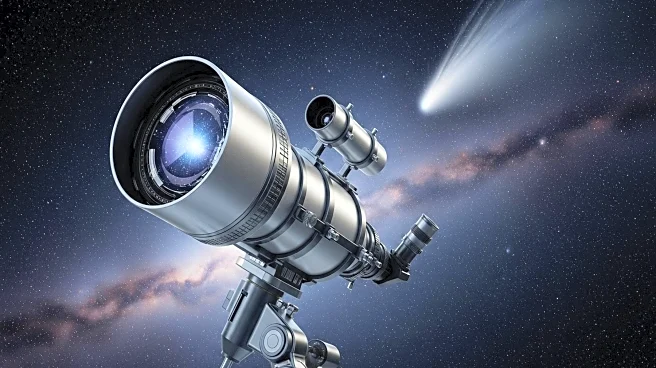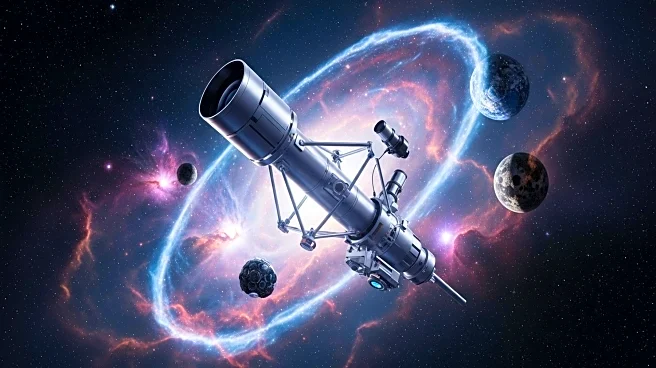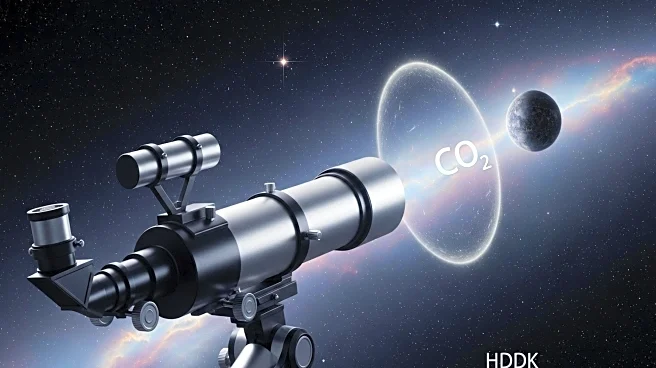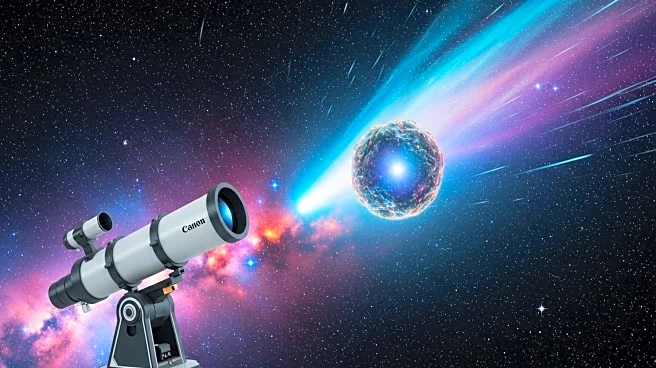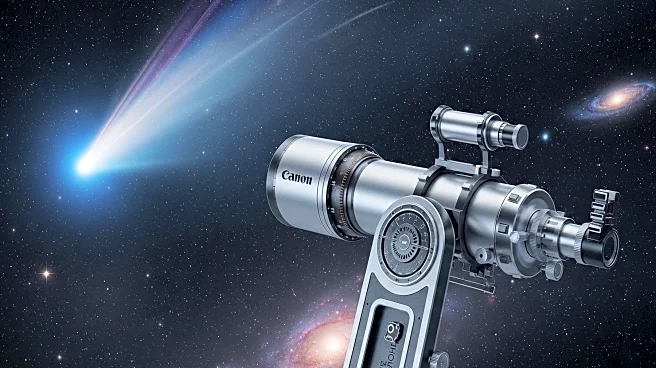What's Happening?
A team of international astronomers has discovered a new interstellar object, 3I/ATLAS, marking the third known visitor from outside our solar system. The object was identified using NASA's Asteroid Terrestrial-impact Last Alert System (ATLAS), which consists of telescopes in Hawaii, Chile, and South Africa. 3I/ATLAS is likely a comet, enveloped by a coma of gas and dust, and is not expected to impact Earth. As it approaches the sun, its composition may reveal clues about its origins. The discovery was led by Aster Taylor from the University of Michigan and Darryl Seligman from Michigan State University, who are characterizing the object and its properties.
Why It's Important?
The discovery of 3I/ATLAS provides a rare opportunity to study interstellar objects, which can offer insights into the composition and dynamics of distant parts of our galaxy. Understanding these objects can enhance knowledge of galactic formation and evolution. The identification of 3I/ATLAS also underscores the importance of advanced observational tools like the Vera C. Rubin Observatory, which is expected to find more interstellar objects in the future. This research contributes to the broader field of astronomy by expanding the sample size of known interstellar visitors, potentially leading to new discoveries about the universe.
What's Next?
In the coming months, space telescopes such as Hubble and JWST will focus on 3I/ATLAS to study its size, spin, and reaction to solar heating. These observations will help refine estimates of its characteristics and age, providing more detailed information about its composition. The research team will continue to monitor the object as it nears the sun, looking for specific gas emissions that could reveal the types of ice present. The findings may lead to further studies on interstellar objects and their role in galactic processes.
Beyond the Headlines
The discovery highlights the collaborative nature of astronomical research, involving multiple institutions and international cooperation. It also emphasizes the role of advanced technology in enabling new discoveries and the importance of public awareness and excitement in driving scientific progress. The study of 3I/ATLAS may contribute to understanding the early history of our galaxy and the formation of stars and planets.
